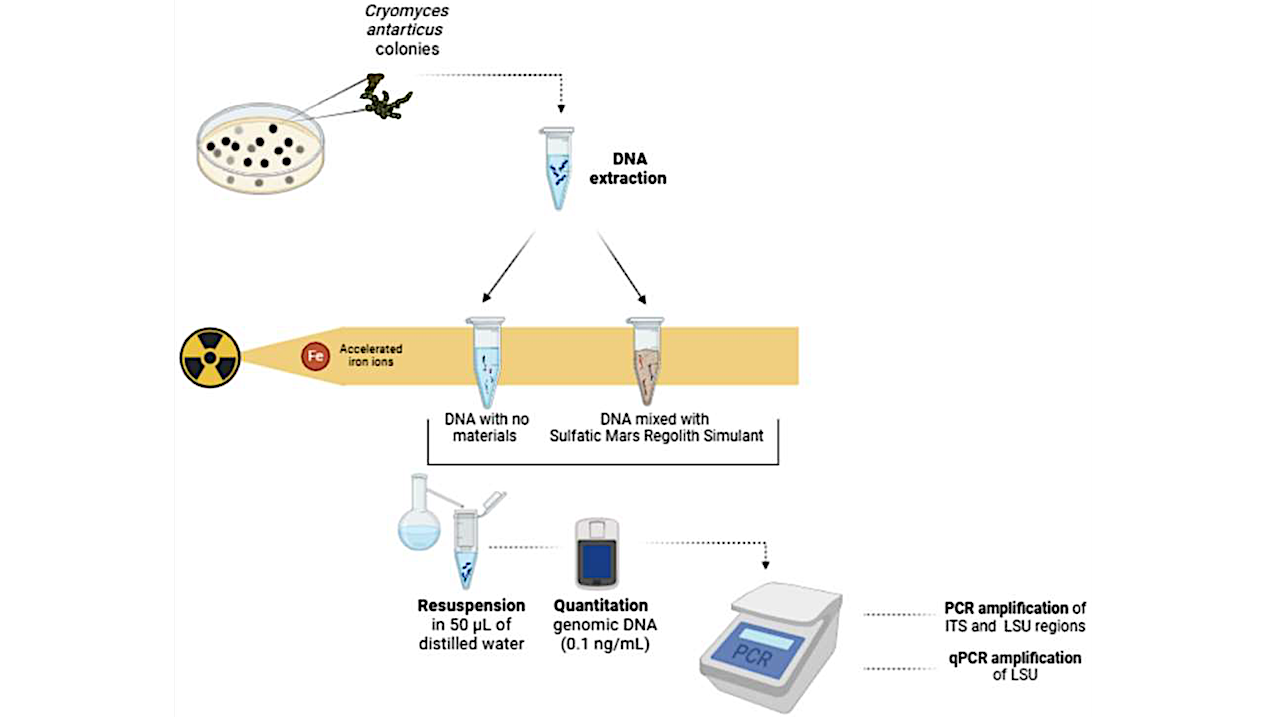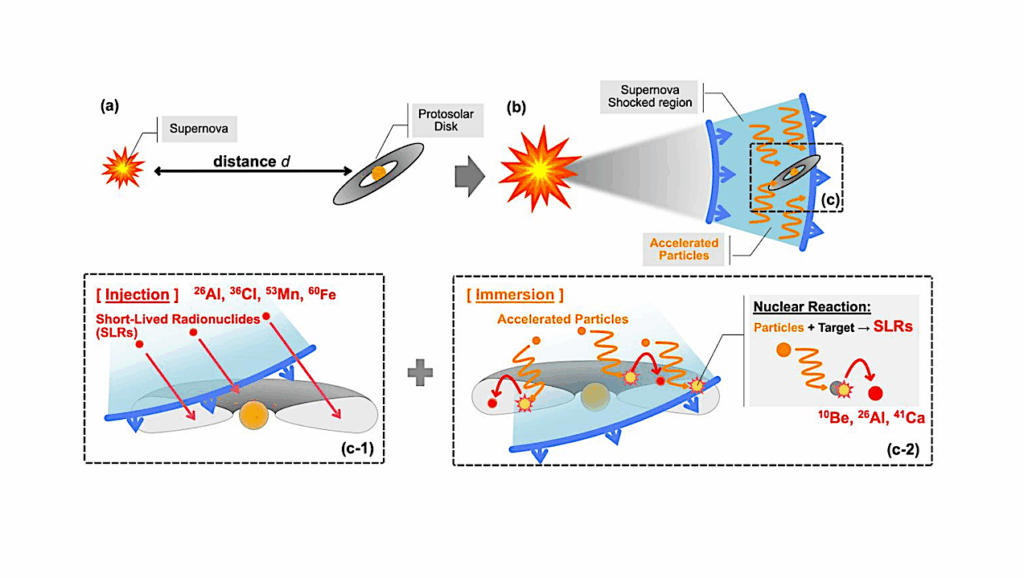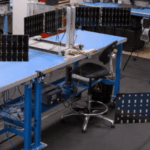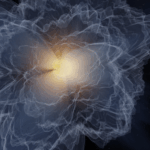Now Reading: Exploring Life Detection on Mars: Understanding Challenges in DNA Amplification in Martian Regolith Analogue After Fe Ion Irradiation
-
01
Exploring Life Detection on Mars: Understanding Challenges in DNA Amplification in Martian Regolith Analogue After Fe Ion Irradiation
Exploring Life Detection on Mars: Understanding Challenges in DNA Amplification in Martian Regolith Analogue After Fe Ion Irradiation


Flowchart of the experimental design. The DNA was extracted from C. antarcticus colonies and divided into two 1.5 mL Eppendorf tubes, one containing a Martian regolith analogue and the other without it. Both tubes were exposed to iron (Fe) ions to simulate environmental stress conditions similar to those experienced on Mars. After exposure, the extracted DNA was resuspended in nuclease-free water and quantified using spectrophotometry, achieving a final concentration of 0.1 ng/mL. Subsequently, the quantified DNA was subjected to amplification using two main techniques: PCR (Polymerase Chain Reaction) to produce multiple copies of the target DNA, and qPCR (quantitative PCR) to determine the exact amount of amplified DNA, monitoring the process in real time. — Life
The search for life beyond Earth currently hinges on the detection of biosignatures that are indicative of current or past life, with terrestrial life being the sole known example.
Deoxyribonucleic acid (DNA), which acts as the long-term storage of genetic information in all known organisms, is considered a biosignature of life. Techniques like the Polymerase Chain Reaction (PCR) are particularly useful as they allow for the amplification of DNA fragments, allowing the detection of even trace amounts of genetic material.
This study aimed to detect DNA extracted from colonies of an Antarctic black fungus both when (i) alone and (ii) mixed with a Sulfatic Mars Regolith Simulant (S-MRS), after exposure to increasing doses of Fe ions (up to 1 kGy). PCR-based amplification methods were used for detection.
The findings of this study revealed no DNA amplification in samples mixed with Sulfatic Mars Regolith Simulant, providing important insights into the potential application of these techniques for in situ DNA detection during future space exploration missions or for their application on the Mars sample return program; it also gives input in the planetary protection discussions.
Exploring Life Detection on Mars: Understanding Challenges in DNA Amplification in Martian Regolith Analogue After Fe Ion Irradiation, Alessia Cassaro, Claudia Pacelli and Silvano Onofri, Life 2025, 15(5), 716; DOI: 10.3390/life15050716
Astrobiology,
Stay Informed With the Latest & Most Important News
-
 012024 in Review: Highlights from NASA in Silicon Valley
012024 in Review: Highlights from NASA in Silicon Valley -
 02Panasonic Leica Summilux DG 15mm f/1.7 ASPH review
02Panasonic Leica Summilux DG 15mm f/1.7 ASPH review -
 03From Polymerization-Enabled Folding and Assembly to Chemical Evolution: Key Processes for Emergence of Functional Polymers in the Origin of Life
03From Polymerization-Enabled Folding and Assembly to Chemical Evolution: Key Processes for Emergence of Functional Polymers in the Origin of Life -
 04How New NASA, India Earth Satellite NISAR Will See Earth
04How New NASA, India Earth Satellite NISAR Will See Earth -
 05And Thus Begins A New Year For Life On Earth
05And Thus Begins A New Year For Life On Earth -
 06Astronomy Activation Ambassadors: A New Era
06Astronomy Activation Ambassadors: A New Era -
07SpaceX launch surge helps set new global launch record in 2024





















